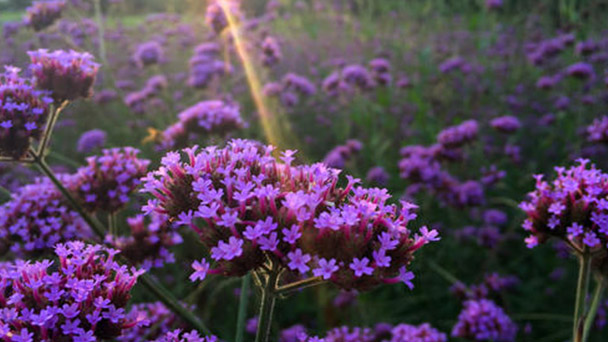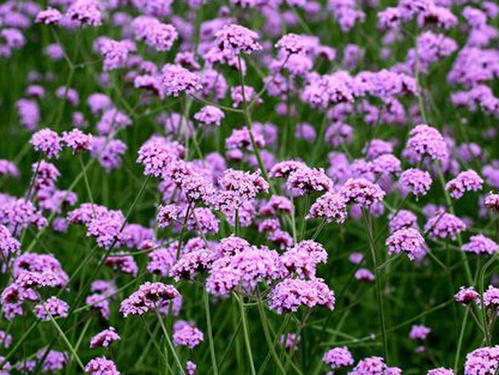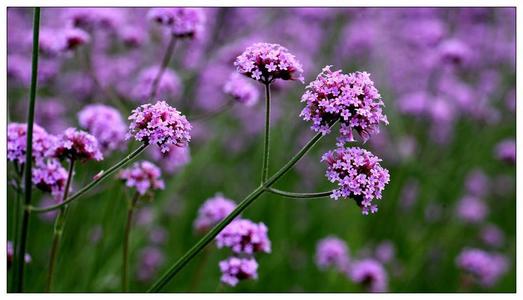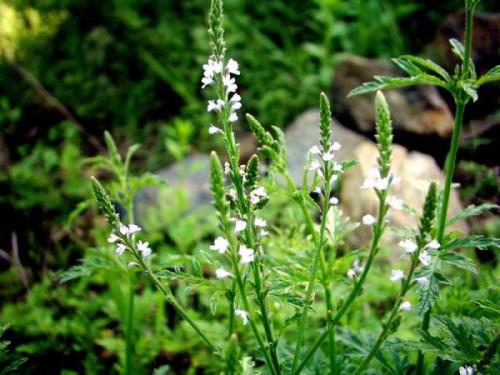Common verbena profile
Written by Maggie
Nov 02 2021

Common Verbena, scientific name Verbena Officinalis, is an erect perennial herb up to 120 cm tall, woody at base, simple opposite leaves, ovate to long ovate, hirsute on both sides, hairs especially dense on the lower veins. Terminal or axillary spikes, flowers blue-purple, sessile, calyx membranous, tubular, corolla slightly diciliate, filaments very short; Ovary is glabrous, fruit enclosed in the calyx, nutlet. The flowering period is from June to October. Common Verbena grows mostly in the wild, native to Europe, East China, South China and Southwest China are distributed in most areas. The whole grass is medicinal purposes, cool, cool blood, dissipate stasis, menstruation, heat, detoxification, antipruritic, insecticide, eliminate distension.
Common Verbena picture

Characteristics of Common Verbena
Stems are erect, base lignified, distally branched, four-prism, edges and nodes sparsely bristle; Leaves are opposite; Cauline leaves are nearly sessile; Leaf blade is obovate or oblong-elliptic, Spicate is terminal or axillary, 30 cm long; The flowers are small and purplish-blue; Calyx tubular, ca. is 2 mm long, apex 5-lobed, outside and apically hirsute; Corolla is the labial shape, the lower lip is larger than the upper lip, upper lip 2 cracks, lower lip 3 cracks, the throat has white long hair; common verbena has 4 stamens, with corolla tube, not exserted; It has 1 pistil, ovary superior, 4 locules, stigma terminal, stigma 2-lobed. The capsule is oblong, split into 4 small nuts when hot.
Common Verbena's growing environment
Common Verbena Plant likes fertilizer, and can grow and develop in the common soil layer, but grows rapidly in the thick and dense sandy soil layer. It is not suitable for planting in low-lying land prone to waterlogging. Common Verbena likes a wet natural environment but is afraid of waterlogging, so don't store water in the basin when watering. The loam or sandy loam with too thick soil layer was selected as the planting area. Late April to early May planting. Avoid weeds and keep the fields free of weeds. Root rot in the long-standing water in the fields can be prevented if the pipes are drained immediately and the soil is turned over.
Common Verbena distribution range
Common Verbena grows mostly in the wild, native to Europe, East China, South China and Southwest China are distributed in most areas.
Common Verbena flower language
Common Verbena, white, symbolizes innocence, looking forward to the return of one's love, and Common verbena, red, symbolizes unity, family and prosperity.
Common Verbena symbolism: Common Verbena is regarded as a sacred flower in Christianity.
Common Verbena's growing methods
To master the cultivation method of Common Verbena plant, the first step is to choose the land suitable for Common Verbena. Before planting Common Verbena, choose loam or sandy soil with a thicker soil layer, and then plow it. The depth of the plow is about 18 ~ 25 cm. When planting Common Verbena, make sure it has the right humidity and temperature so that the seedlings will grow in about 10 to 20 days, and can be transplanted when the seedlings reach a height of 5 cm.
Plants can usually be removed when weeding, and the soil should be properly cultivated. When the soil planted is too dry, it should be watered in time to ensure the normal growth of Common Verbena. Frequent removal of weeds can prevent grass wastage and improve yield. Excellent variety is the primary condition to improve the yield, once we planted at the same time to set up another seed field, the planting method is the same as ordinary plants, strengthen field management during the period, appropriate application of phosphate fertilizer and potassium fertilizer before flowering, so that the seeds of the plant full, but also can get more varieties.

Common Verbena's method of propagation
Common Verbena is fond of light and grows well in a sufficient light environment. It is easy to grow unnecessarily in insufficient light. The plants are thin and delicate, easy to fall down, with short spike length, small flower size and number, dark color, and poor ornamental value. Common Verbena is strong, soil - friendly, fertilizer - tolerant, and thrives in sandy and gravel environments where rainfall is plentiful.
Common Verbena has a strong nature and rarely suffers from pests and diseases, but if there is water in the field during the growing season, root rot can occur, and drainage should be done promptly.
Common Verbena does not have a high-temperature requirement. It can tolerate high temperatures of more than 30 degrees in summer, which is also a period of vigorous growth of Common Verbena. It needs to ensure moisture and pay attention to drainage to avoid root rot.
Common verbena propagation is based on seed seeding, deep soil loam or sandy soil is selected as planting ground, and organic manure such as barnyard manure, manure, or compost is applied as base fertilizer. The seedling can emerge in three weeks under appropriate temperature conditions, at which time seedlings can be thinned and transplanted according to the density of seedling emergence.
Common Verbena's main value
Common Verbena is a kind of nicety tree. Root, stem, leaf and flower into medicine, have dispelling dampness, heat diuretic, analgesic, liver and blood pressure effect. Common Verbena enjoys with lemongrass, rosemary or honey depending on your taste. Common Verbena is suitable for the person with lower body swelling, drainage effect is good. It plays a certain role in thin legs.
Anti-inflammatory analgesic Common verbena is contained in a variety of natural medicinal ingredients, especially the content of volatile oil and nucleoside substance is higher. These substances can eliminate the sensitive bacteria and pathogenic bacteria in the human body, and can prevent the body inflammation, can let the body's own anti-inflammatory ability increased significantly, often taking can play the important role of anti-inflammatory analgesic.
Common Verbena is also rich in cardiac glycosides, a substance that improves the function of the human heart.

Latest Updated
- Benefits of Bugleweed - 7 Science-backed Health Benefits
- Bugleweed Dangers & Side Effects - Is It Poisonous?
- How to Plant Evergreen Trees - What You Should Know
- When to Plant Evergreens - Grow Guide for Evergreen Trees
- 12 Wonderful Evergreen Shrubs for Your Garden
- 12 Popular Evergreen Plants with Pictures for Beginners
- When And How To Prune A Lilac Bush Like a Pro
- How to Grow & Care for Lilac Vine (Hardenbergia Violacea)
- Japanese Lilac Tree (Syringa Reticulata) Care & Propagation Guide
- Shumard Oak Pros and Cons - What to Know
Popular Articles
- Winter maintenance of Antirrhinum Majus
- How to Grow Terminalia Mantaly Tree
- How to Grow and Care for Crossostephium Chinense
- How to grow Antirrhinum Majus in spring
- Peristeria Elata (Dove Orchid) Profile: Info & Care Guide
- Underwatered Snake Plant (Sansevieria Trifasciata) - Signs And How To Fix
- How to Care for Brazilian Jasmine Plant (Mandevilla Sanderi)
- How to Grow & Care for Graptopetalum Purple Delight in Summer
- Rosa Chinensis (China Rose): Plant Growing & Care Tips
- How to Care for Baby Sun Rose (Aptenia Cordifolia)